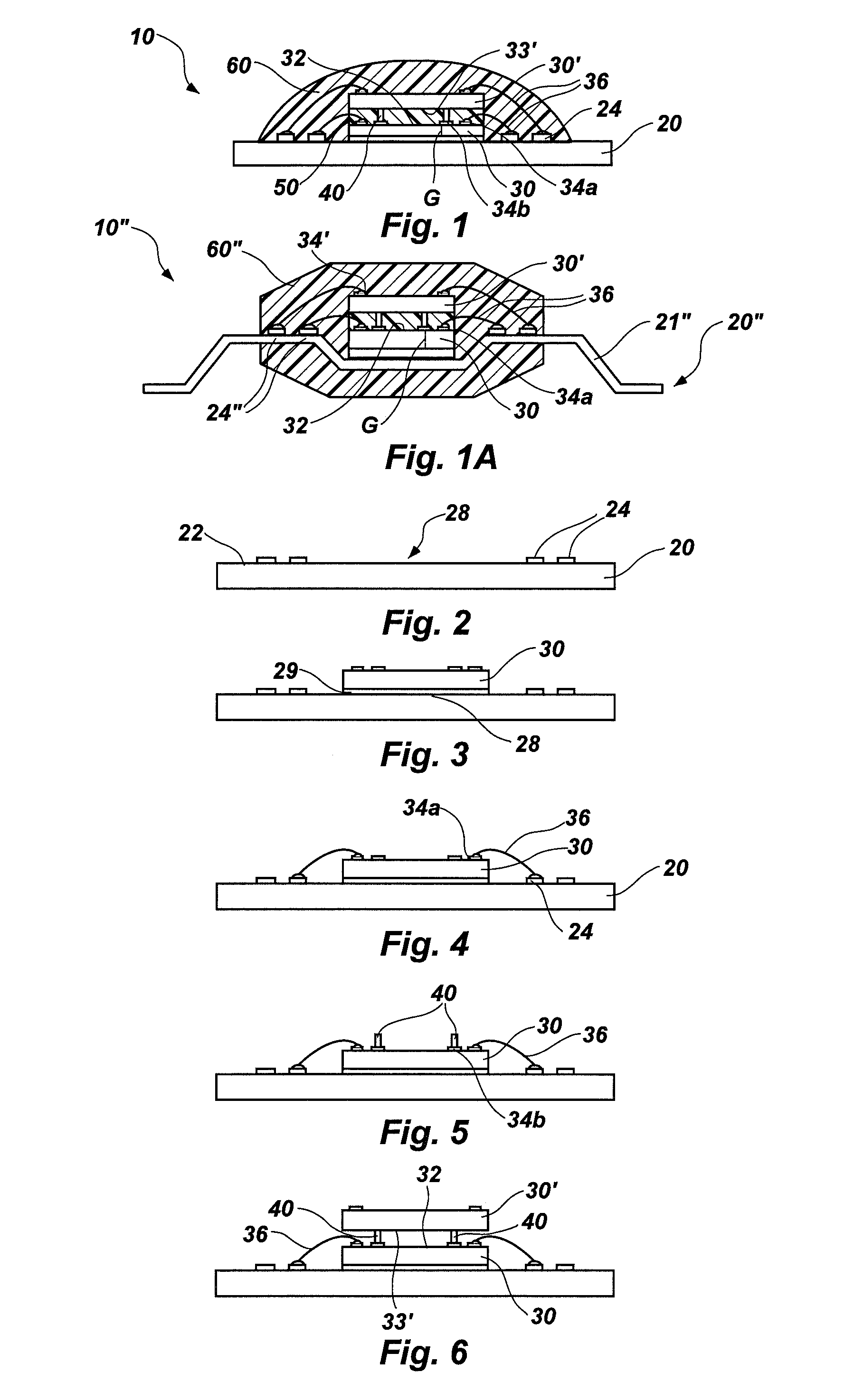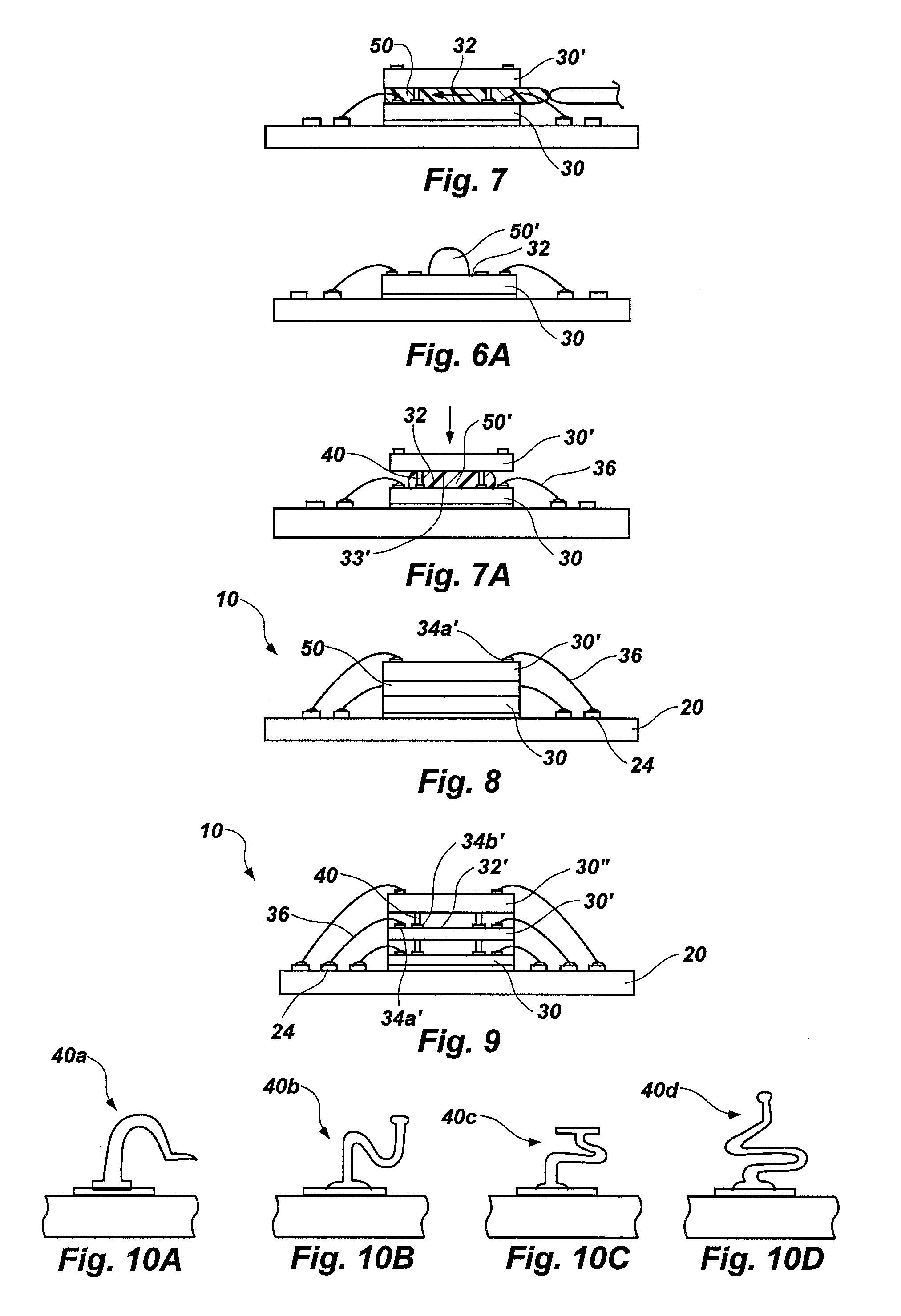Methods for assembling semiconductor devices in stacked arrangements by positioning spacers therebetween
a technology of semiconductor devices and spacers, which is applied in the direction of solid-state devices, basic electric elements, manufacturing tools, etc., can solve the problems of wasting adhesive, affecting the quality of adhesive, and reducing the obtainable height of such multi-chip modules, so as to facilitate the spread of high-viscosity adhesive materials. , the effect of high viscosity
- Summary
- Abstract
- Description
- Claims
- Application Information
AI Technical Summary
Benefits of technology
Problems solved by technology
Method used
Image
Examples
Embodiment Construction
[0043]With reference to FIG. 1, an exemplary embodiment of semiconductor device assembly 10 is illustrated. As depicted, semiconductor device assembly 10 includes a first semiconductor device 30 and a second semiconductor device 30′ positioned over and spaced apart from first semiconductor device 30 by way of spacers 40.
[0044]Semiconductor device assembly 10 may also include a substrate 20, such as the depicted circuit board, an interposer, another semiconductor device, leads, or other suitable, known substrates.
[0045]First semiconductor device 30 includes first and second sets of bond pads 34a, 34b, respectively, on an active surface 32 thereof. Bond pads 34a communicate with circuitry of first semiconductor device 30 and, therefore, may also be referred to as “circuit bond pads.” Accordingly, and as depicted, bond pads 34a are configured to be secured to discrete conductive elements 36, such as bond wires, tape-automated bond (TAB) elements comprising conductive traces carried on ...
PUM
| Property | Measurement | Unit |
|---|---|---|
| conductive | aaaaa | aaaaa |
| area | aaaaa | aaaaa |
| viscosity | aaaaa | aaaaa |
Abstract
Description
Claims
Application Information
 Login to View More
Login to View More - R&D
- Intellectual Property
- Life Sciences
- Materials
- Tech Scout
- Unparalleled Data Quality
- Higher Quality Content
- 60% Fewer Hallucinations
Browse by: Latest US Patents, China's latest patents, Technical Efficacy Thesaurus, Application Domain, Technology Topic, Popular Technical Reports.
© 2025 PatSnap. All rights reserved.Legal|Privacy policy|Modern Slavery Act Transparency Statement|Sitemap|About US| Contact US: help@patsnap.com



